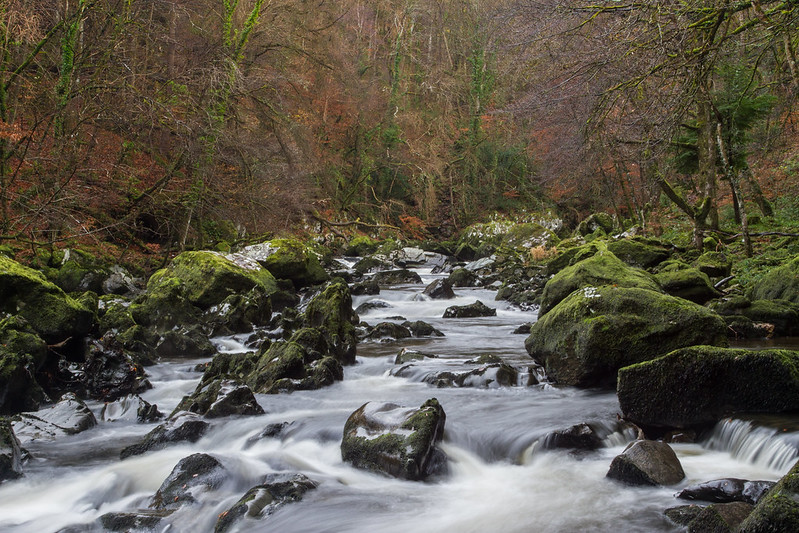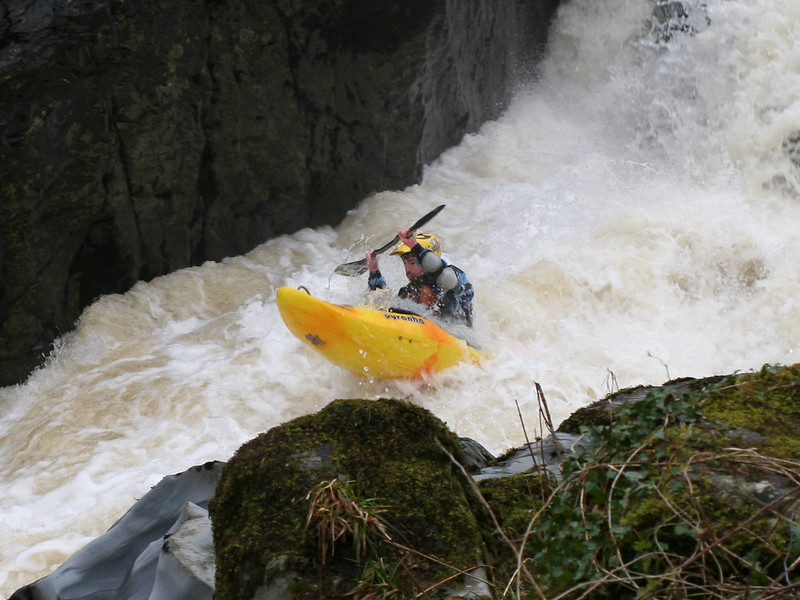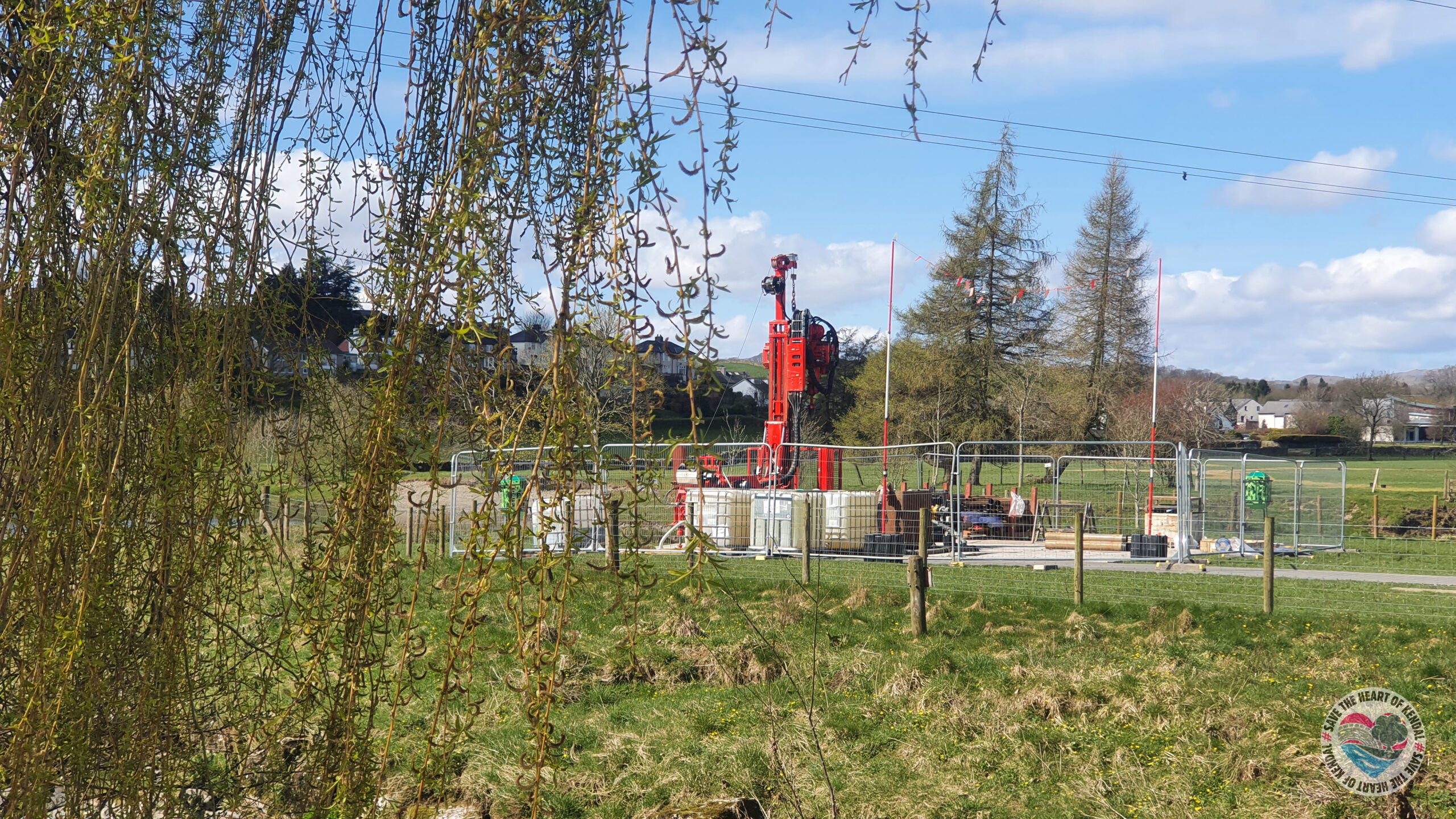The River Kent flows through the heart of the town of Kendal and has the highest level of protection afforded to a river in Britain, being both a Site of Special Scientific Interest and a Special Area of Conservation. It is also just outside of the Lake District National Park, and is often billed as the “Gateway to the Southern Lakes”. A number of features that the river Kent has been designated for are likely to be impacted by Kendal Flood Risk Management Scheme.
14th April 2021 — Comments are off for this post.
Kendal Flood Risk Management Scheme – Overview
17th June 2014 — Comments are off for this post.
RWE open day tomorrow 2-7pm Conwy Falls Café

Don't forget the RWE open day at Conwy Falls Café tomorrow (Wed 18th June) 14:00 till 19:00. If you can get there even for ten minutes please do. Ask them how huge civil engineering projects in the heart of a national park are supposed to improve the environment.
Invite to the RWE open day over on the Snowdonia Society's site
10th March 2014 — Comments are off for this post.
Order your T Shirt – less than one week to go!
As it says, the deadline for ordering T Shirts is just under a week away! Orders close this Sunday, March 16th.
To order your T Shirt, or just make a donation, please look here.

24th February 2014 — Comments are off for this post.
How can you help? Paddle Bubble and the Fairy Glen Visitor book
At a recent meeting with Natural Resources Wales, representatives from the Save the River Conwy group pressed for recreational use of rivers to be taken into account when assessing abstraction license applications. In light of this, robust evidence of recreational use of the Conwy will be very important when the abstraction license for this scheme comes to consultation.
For some time now, the kayaking community has been using Paddle Bubble to record kayaking use of the Fairy Glen. The site is simple and easy to use, you can log in via Facebook, or register directly. Once logged in you can log your personal paddling. From this it is possible to establish how many paddlers are using the river.
Non paddling supporters of Save the River Conwy have asked us for a way to record their visits to Glen too. In response to this, we have made The Fairy Glen Visitor Book. This is a simple on line form you can fill in each time you visit the Fairy Glen. Like the Paddle Bubble record of kayaking, this visitor book to will allow us to record the recreational importance of this place for non kayakers.
Representatives from the Snowdonia National Park were also interested to see the Paddle Bubble data as they hope to learn more about the importance of kayaking and canoeing visitors to the region. In light of this, as well as logging your trips on the Glen please log your trips on other rivers too.
21st February 2014 — Comments are off for this post.
Order your t shirt now!
Do you want to support the protection of the Fairy Glen, spread the word about Save The River Conwy and look awesome at the same time? A limited run of Save the Conwy T-shirts will be available and we are starting pre-orders now. Check here for the details.
Please note - the T shirts will be supplied on a pre order basis, with an order deadline of 16th March.
30th December 2013 — Comments are off for this post.
Short radio item on community owned power schemes
An interesting discussion on community owned power schemes from 13:10 onward in this BCC radio programme You and Yours. The cost of electricity sub-stations and connection to the grid are highlighted ... as are the funds available to communities to develop their own renewable power schemes and to profit from them themselves.
BBC Radio 4: You and Yours broadcast 30/12/2013 http://bbc.in/Ka4gtm
8th December 2013 — Comments are off for this post.
Time to Act! Our first call for action is now!

If you care about the Conwy and want to know how you can help, read on.
National Resources Wales are holding an open consultation into the future management of rivers in Wales. Anyone who fishes in, paddles on, swims in, lives near or just cares about our waterways needs to respond. The more responses they receive, the more influence our views will have on this and future threats to our precious rivers.
Visit their consultation page for more details.
Please download and fill in the Question Proforma and return it to [email protected] before the 22nd Dec when this consultation ends.
If you are not sure what to write, a copy of the response sent by Save the Conwy can be found here (.pdf) and here (.docx).
7th December 2013 — Comments are off for this post.
How will the scheme affect kayaking?

Initial estimates suggest the scheme will have a dramatic adverse effect on kayaking. The dewatered section of the Conwy, known locally as the Fairy Glen, is extremely important for UK paddlers. If the scheme goes ahead there will be a 42% drop in the amount of time when this section will have enough water to paddle.
The Fairy Glen is a classic section of river for white water kayaking and can be considered one of a small number of test piece runs in the UK. As well as having continuous, high quality, challenging rapids, this part of the Conwy is also important to paddlers because it runs very regularly. Other sections of similar quality & difficulty are usually found much higher in their catchments and so need very high water levels before flow is sufficient for kayaking. By contrast, the Fairy Glen is a narrow gorge in the lower reaches of a large river system. As a result, water levels are often high enough for kayaking here when other rivers are too low. This is frequently the only place in Snowdonia, indeed in England and Wales, where kayakers can find sufficient flow to paddle white water of this quality and difficulty.
Currently, discharge in this section of the Conwy reaches or exceeds the minimum paddling threshold for 33% of the year. Since the hydro scheme will remove water from the river above the start of the run & return it below, discharge in the Conwy will have to be higher before flow in the Fairy Glen reaches the minimum level for kayaking. Initial calculations suggest that when this is accounted for, the Fairy Glen will run for only 19% of the year. This represents 42% drop in the amount of time when it is possible to paddle this section.
It could be suggested that diverting water might benefit kayakers by reducing levels in the Glen at times when the Conwy may be too high to paddle. It is important to realise however that this is not a gain in real terms. When the Glen is too high numerous other rivers of similar quality and difficulty are running so paddlers have numerous alternative options already. The greatest concern for paddlers in the loss of paddling on the Glen when it is the only section of this standard running, anywhere in England or Wales.
Update, 11 February 2014 - Final APPENDIX_A_Impact_of_Afon_Conwy_on_Kayaking
An Appendix to this post, with details of flow data used, will be added shortly.
If you paddle the Fairy Glen, please head over to PaddleBubble.com and record your trip - click the Add Paddle button and fill it in.
5th December 2013 — Comments are off for this post.
The Fairy Glen woods

Fairy Glen woods is a semi-natural broadleaved woodland set on a deep rocky gorge on the Afon Conwy near Betws y Coed. Trees include sessile oak and ash together with some small leaved lime, birch and wych elm. The humid conditions in the gorge provide ideal conditions for mosses, lichens, liverworts and ferns.
Here's the Countryside Council for Wales / Natural Resources Wales' information about the Fairy Glen woods, a site of Special Scientific Interest, through which the hydro scheme's pipeline will be laid. Some useful resources here too on the species to be found in and around the woods.
4th December 2013 — Comments are off for this post.
Sediment, too much or too little of a good thing
Dams and weirs trap sediment, which would naturally be swept downstream to feed and enrich the lower reaches of a river, making life hard for life above and below the dam.
4th December 2013 — Comments are off for this post.
Heavy machinery at Dolgarrog
This news story (watch the one minute video) from the BBC shows some of the heavy machinery in use replacing the pipes this spring at the Dolgarrog hydro scheme. Matthew Richards' report highlights the difficulty of bringing this machinery onto site over the course of six months of construction work.



